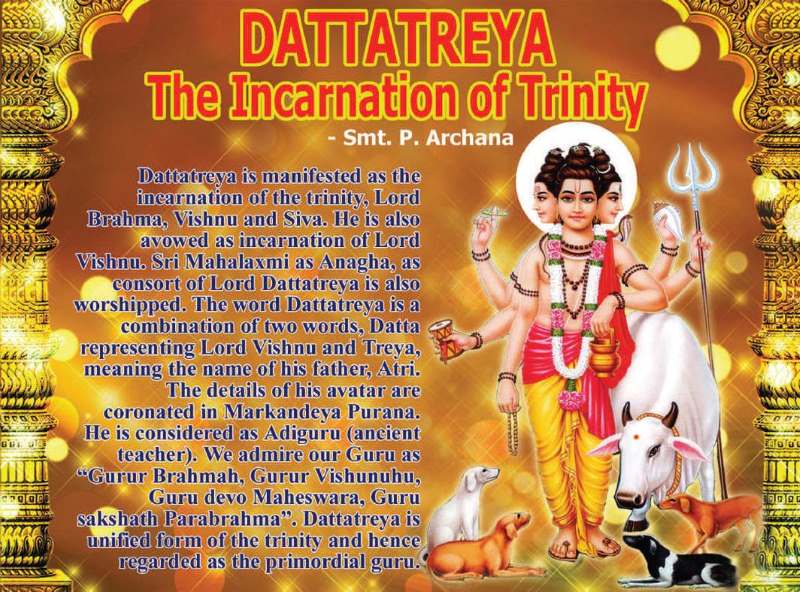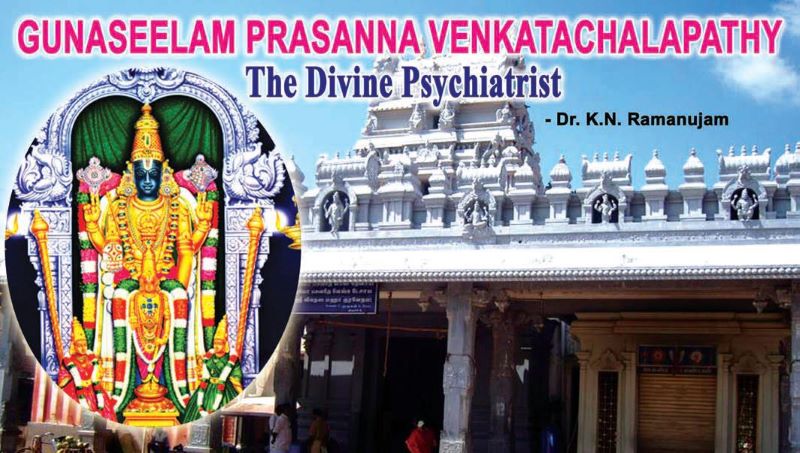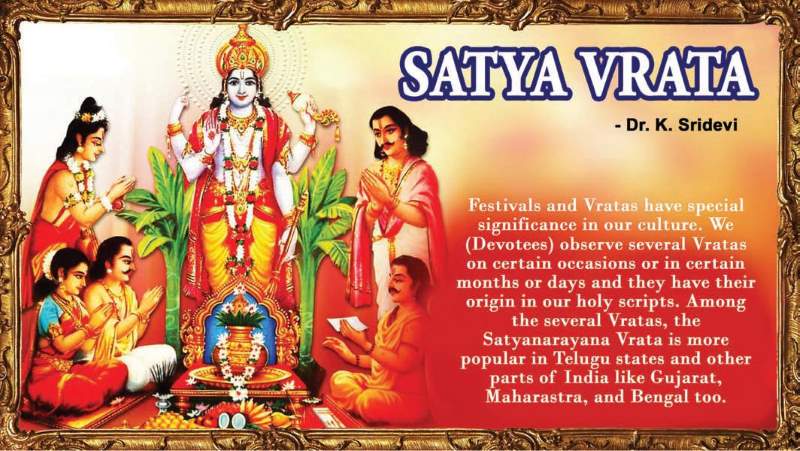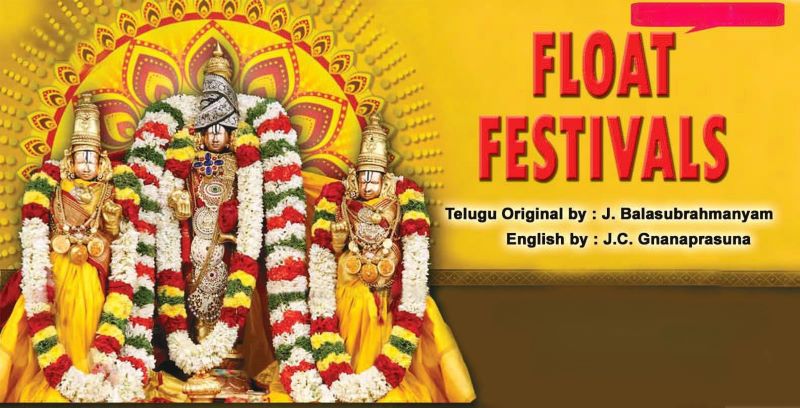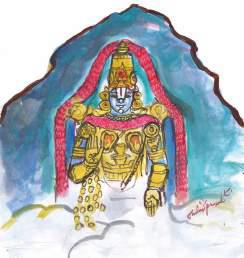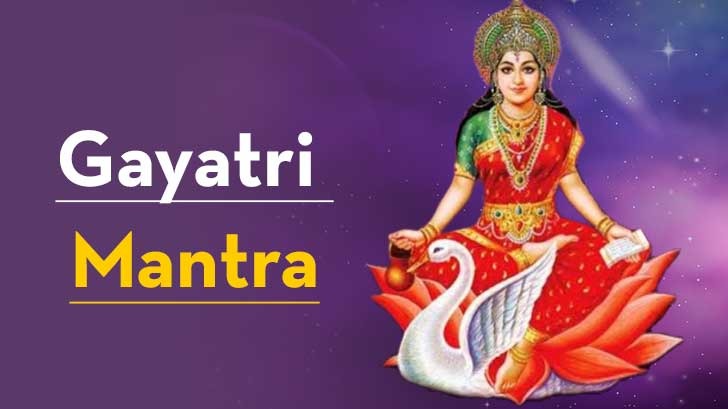Dattatreya Salutation to Lord Dattatreya who created the universe, who is predominate for existence and destruction and is saviour from the bonds of sorrows of life. Dattatreya Upanishad in Atharvana Veda mentions this avatar. He preached Sri Vidya upaasana (Tripura rahasya) to Parasurama in Tretayuga. He also preached Ashtanga yoga (the eightfold path of yoga). Read More
Category: Special Articles
Sri Prasanna Venkatachalapathy Temple, Gunaseelam
Sri Prasanna Venkatachalapathy All the gods and goddesses cure diseases, Among human beings, there are specialists like Cordialists, Dentists, psychiatrists etc. Among god, so we are specialists who cure the particular ailment. Lord Danvantry cures all the diseases. Under him, many perumals are doing some work as specialists. Gunaseela Perumal of Gunaseelam is a specialist Read More
Satyanarayana Vrata: Benefits, Ritual & Story
Satyanarayana Vrata Satyanarayana Vrata has taken deep root in the hearts of devotees because of its deep religious and divine significance. At every righteous and pious occasion invariably Satyanarayana Vrata has to be performed. Satyanarayana Vrata is said to be the Vrata of Lord Narayana. The Lord Vishnu is referred to as Narayana. It is Read More
Vamana Avatar – The Fifth Incarnation of Lord Vishnu
Vamana Avatar / Vamana Swaroopa The Puranas offer splendid glimpses of Hindu tradition and culture. They protect ‘Sanatana dharma’ and religious righteousness. The Vamana Purana is one of the eighteen Puranas written by Maharshi Veda Vyasa. It contains tales about Lord Vishnu in His ‘Vamana Swaroopa’ i.e., dwarf incarnation. While giving answers to sage Narada’s Read More
Five Forms of Sri Maha Vishnu
Five Forms of Sri Maha Vishnu According to the Vaishnava Agamas, Sri Maha Vishnu has five forms (aspects or modes). Five Forms of Sri Maha Vishnu are Para, Vyuha, Vibhava, Antaryami and Archavatara.(Iconic Worship is described as Archavatara). A brief description of these 5 forms follows: Para Para is the highest form of the Lord Read More
Nava Narasimha Temples in Telugu States
Lord Narasimha is one of the dasa avatars of Sri Maha Vishnu. However, the Narasimha avatar has a unique significance, especially in South India. There are many Narasimha temples throughout Telugu states. Nine significant Temples (Nava Narasimha Temples) Among them, nine significant temples depict different forms of the Lord. In addition to them, there are Read More
Teppotsavam (Float festival)
Teppotsavam / Float Festival / Teppa Tirunallu ‘Teppotsavam’ (Float festival) is a Hindu religious festival used to celebrate in the temples in many parts of South India, especially in Tirumala and Tiruchanur. It is called ‘Tirupalli Odai Tirunal’ in Tamil. It is also called ‘Teppa Tirunallu’ in Telugu. (Float means boat or ship) Sri Tirumala Read More
Various Names of Venkatachalam
4 Names of Venkatachalam Bhavishyottara Purana gives the four names of Venkatachalam. It was mentioned there that for the same hill, different names were given in each Yuga respectively- in Krita Yuga, it was called ‘Vrishabhachalam’, in Treta Yuga it was called ‘Anjanaachalam’, in DwaparaYuga it was called ‘Seshachalam’ and in Kali Yuga, it is Read More
Sri Gayatri Mantra and its Divine Energy
Gayatri Mantra A Sanskrit syllable or a characteristic sound that is endowed with an ability to elevate the spiritual and psychological levels in human beings through meditation and chanting is known as “Mantra”. The word ‘Mantra’ literarily means ‘tool of thought’. The mantra will calm the mind of the chanter and prepare it for meditation. Read More
Vyuha Lakshmi – The Most Compassionate
Goddess Mahalakshmi is Vyuha Lakshmi Goddess Mahalakshmi is Vyuha Lakshmi and Yoga Lakshmi. Vyuha- means a secret strategy, a divine scheme, a plan or a strategy. Lakshmi Devi reaching the hridaya sthana of Lord Vishnu happened secretly, very naturally. Their divine scheme is to protect the world just as parents care for their children. And Read More
